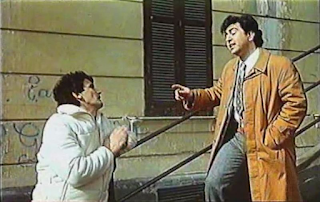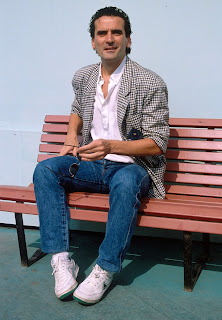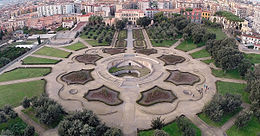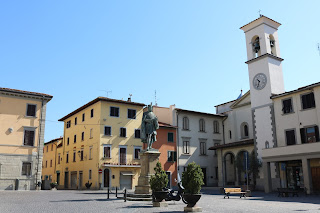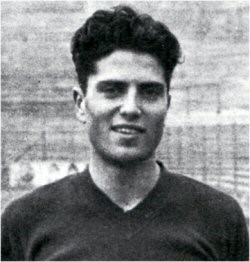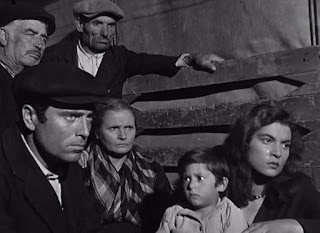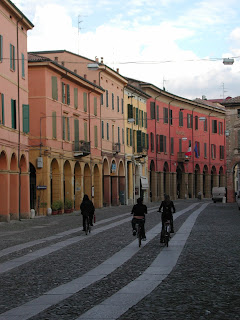Rival fans wreck debut of Rossini’s most famous opera
 |
| A typical costume for the main character, the barber Figaro |
The Barber of Seville, the work that would come to be seen as
Gioachino Rossini’s masterpiece of comic opera, was performed for the first time on
this day in 1816 at the Teatro Argentina in Rome.
Commissioned by the theatre’s owner, Duke Francesco
Sforza-Cesarini, it had a libretto by Cesare Sterbini based on the French
comedy play Le Barbier de Séville and was originally entitled Almaviva or
The Useless Precaution, out of deference to Giovanni Paisiello, the most popular
composer in Italy in the 18th century, whose own version of Il barbiere
di Siviglia had been very successful.
The second part of the same text, by Pierre Beaumarchais,
was behind Mozart’s opera The Marriage of Figaro, which premiered four years
after Paisiello’s.
Nonetheless, Paisiello’s loyal fans saw Rossini’s opera as an
attempt to steal their favourite’s thunder, whatever name he gave it, and organised
what was nothing short of an act of sabotage, packing the theatre on opening
night and proceeding to jeer, shout and catcall throughout the whole performance,
unsettling the cast and leading to a number of mishaps on stage.
Rossini, who had conducted the opening performance, was so
outraged and embarrassed he stayed away the following night, handing the baton
to a deputy.
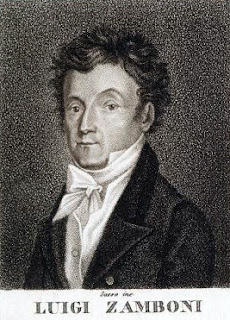 |
| Rossini wrote the part of Figaro specifically for his friend, the baritone Luigi Zamboni |
Yet, having already made his mark with hits such as Tancredi,
L’Italiana in Algeri and Elisabetta, regina d’Inghilterra, Rossini had a following
of his own and the audience for the second night, on hearing the now unmistakable
arias for the first time, declared the opera a resounding success, their
enthusiasm such that a crowd gathered outside his residence later in the evening
to voice their approval.
Luigi Zamboni, the bass-baritone Rossini had in mind when he
wrote the score – in the space of just 12 days, he later claimed – gave a
bravura performance as Figaro, the barber of the title and something of a Mr
Fixit, as in “Largo al factotum” – “Make way for the factotum” – the resounding
aria that marks his entry on to the stage in the first act.
Count Almaviva, the Spanish nobleman who enlists Figaro’s
help in wooing the rich ward of an elderly physician, was sung by the tenor, Manuel
Garcia, who had worked with Rossini before, with the role of Rosina, the object
of his affections, played by the contralto Geltrude Righetti-Giorgi. The bass
Bartolomeo Botticelli was cast as her guardian, Dr Bartolo, whose motive for
wishing to keep Rosina from running off with a handsome young suitor was that
he wished to marry her himself when she came of age.
It was not long before the opera was being performed in
cities across Europe, becoming known so generally as The Barber of Seville that
the original title was, in time, discarded.
It made its London debut at the King’s Theatre in March 1818,
followed by a version in English at Covent Garden in October of the same year. The same translation, by John Fawcett and
Daniel Terry, was performed at the Park Theatre in New York in 1819, becoming
the first Italian opera staged in America to be sung in the original language
when it returned to the Park Theatre in 1825, with Garcia again in the role of
Almaviva.
More than 200 years later, according to Operabase, the
respected collator of opera statistics, The Barber of Seville is the seventh
most performed opera in the world, just ahead of Mozart’s Marriage of Figaro. On
performance numbers, Verdi’s La Traviata is the world’s favourite.
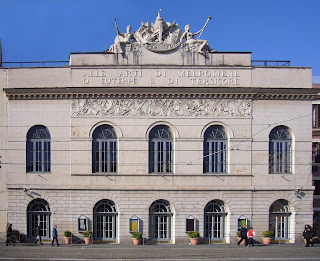 |
| The Teatro Argentina, where The Barber of Seville was performed for the first time, is one of Rome's oldest theatres |
Travel tip:
The Teatro Argentina opera house in Rome is one of the
oldest theatres in the city, constructed in 1731 to designs by Gerolamo Theodoli,
on behalf of the Sforza-Cesarini family. It takes its name from its location on
the Largo di Torre Argentina, a square that was named not after the South
American country but by a Papal Master of Ceremonies who hailed from Strasbourg,
the Latin name for which was Argentoratum. The theatre stands on the site of
the Curia Pompeia, the meeting hall in which Julius Caesar was murdered in
44BC.
Find a hotel in Rome with Booking.com
Find a hotel in Rome with Booking.com
 |
| The Palazzo Ducale is a typical palace in Pesaro |
Travel tip:
Gioachino Rossini was born in Pesaro, now a seaside resort in
the northern part of Marche, about 40km (25 miles) south of the much better
known resort of Rimini, in Emilia-Romagna.
Like many Italian Adriatic resorts, it has an old town distinctly
different from the hotel-lined avenues close to the sea, in Pesaro’s case built
on the site of an old Roman settlement that changed hands many times over the
centuries until it became capital of the duchy of the Della Rovere family, who
built many of the palaces that survive in the old town. It was still part of
the Papal States when Rossini was born in 1792.
More reading:
Giovanni Paisiello - the audience favourite with a jealous streak
How Rossini turned his talent into great wealth
The opera singer famous for her interpretations of Rossini
Also on this day:
Giovanni Paisiello - the audience favourite with a jealous streak
How Rossini turned his talent into great wealth
The opera singer famous for her interpretations of Rossini
Also on this day:
1549: The birth of Francesco Maria II della Rovere, the last Duke of Urbino
1778: The death of physicist Laura Bassi, ground-breaker for women in academia
1993: The death of performance car maker Ferruccio Lamborghini
(Picture credits: Teatro Argentina by Lalupa; Palazzo Ducale, Pesaro by Italtrucker; via Wikimedia Commons)
1778: The death of physicist Laura Bassi, ground-breaker for women in academia
1993: The death of performance car maker Ferruccio Lamborghini
(Picture credits: Teatro Argentina by Lalupa; Palazzo Ducale, Pesaro by Italtrucker; via Wikimedia Commons)

